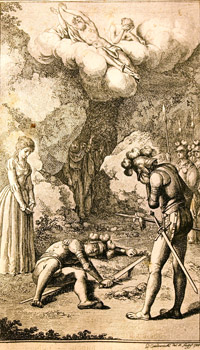
Hemiparasite, aphrodisiac, protectant against poison and kissing.
Ever wonder what kissing and parasites have in common? What on earth does this have to do with flowers, holidays, blogs and people? Oh just a little science and history on one of our traditional holiday plants, the mistletoe. 
First off, Science! There are 2 types of mistletoe. The one most commonly used for Christmas decoration is Phoradendron flavescens. Don't worry..you do NOT have to ask for it by that name! Did you know the name Phoradendron is derived from the Greek for "tree thief"? Pretty cool huh?
This thieving little parasitic plant has been a part of of the winter holidays for quite some time but have you ever wondered why? Well friends, you could wiki some knowledge on it or let me give you the readers digest version. You've got things to do, parties to plan, gifts to buy, but for a few minutes just read on and I'll give you some interesting tidbits about mistletoe. So let's talk about the gods.
 Frigga, The goddess of love, learned her son, Balder, god of the sun, had a dream where he died and the earth was destroyed because of it. As she wanted to protect her son from harm, she told the elements earth, water, wind, and fire, and all the plants and creatures of nature that no harm would befall him. Everybody was good with that except Balder's one enemy, Loki, the god of mischief.
Frigga, The goddess of love, learned her son, Balder, god of the sun, had a dream where he died and the earth was destroyed because of it. As she wanted to protect her son from harm, she told the elements earth, water, wind, and fire, and all the plants and creatures of nature that no harm would befall him. Everybody was good with that except Balder's one enemy, Loki, the god of mischief.
Loki knew of one plant Frigga had overlooked in her quest to protect her son; the lowly mistletoe. Why was it overlooked? Because it was not of the earth or under the earth. It thrived on the apple and oak trees. He took the unassuming plant and fashioned it into an arrow and gave it to the blind Hoder, god of winter, who shot it. The arrow hit Balder and killed him. The elements tried for 3 days to bring him back to life, finally he was restored by Frigga, his mother. The tears she cried for her son turned into the pearly white berries on the mistletoe plant and Frigga was so joyful she kissed everyone who passed under the tree on which it grew.
After that, whomever should stand under the mistletoe would have no harm befall them. Only a kiss, a token of love. Sounds pretty nice, I'll take it! Of course, this was the legend; other countries have their own take on mistletoe and it's many magical properties.
In Scandinavia, mistletoe is known as a plant of peace. Enemies could declare a truce or warring spouses could kiss and make-up underneath it. The English used mistletoe to make a ball and dubbed it a “kissing ball”. If a young lady stood under it at Christmas time, she could not refuse to be kissed, as it would lead to a deep romance or lasting friendship. If she remained unkissed, she would marry within the following year. To protect against all the lucky ones who did get kissed under it, some parts of England would burn the Christmas mistletoe on the twelfth night. In France, kissing under the mistletoe is linked to New Year's Day: “Au gui l'An neuf” (Mistletoe for the New Year).
These are just a few examples of many reasons why kisses are exchanged under the mistletoe.
Some say mistletoe has magical properties, others say you'll kiss the love of your life under it, regardless of whether we believe the stories and legends or not, it's still a part of the fun and frolicking which occurs during the holiday season. Not only is its history rich, but the nature of mistletoe is fascinating as well! If you're looking to add alittle more frolic to your next holiday party or start a new tradition, be sure to stop by Gillespie Florists and pick up a bundle of this magnificent plant.
Tied together with ribbon and ready to be hung in a doorway for an unsuspecting victim, sparring spouse, or simply there to add a bit more festive to your décor. Either way, mistletoe is a winner for the holiday season.
Click below to see more of what we have to offer during this wonderful holiday season!
It's not too late to order and have it hand delivered to your door!

